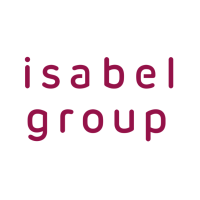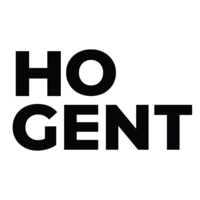Top functies
Back-end
Miscellaneous
Cloud
Agile
Modeling Languages
Front-end
Mgmt Frameworks
Enterprise Tools
Projects description
- Plato: Program to setup, build and run an enterprise workforce management
system (incl. planning and forecasting) for all the store workers in the Colruyt
Group.
- Java Strategic Track: Strategic project to enhance the Java capabilities of Colruyt
IT
- CoE: Center of Excellence for architecture is responsible to define and rollout
multiple architecture methodologies for application architecture, data architecture,
integration architecture, security architecture, ...
- Agile transformation: Strategic collaborate project of business and IT to define an
Agile strategy and support various Agile initiatives within the entire Colruyt Group.
Job Description
Store Workforce Management
As the Enterprise IT Architect for Store Workforce Management at Colruyt Group, I
played a pivotal role in the transformative journey of the Plato project. Tasked with
rejuvenating a legacy system dating back two decades, I was brought in to steer the
project to success after the initial vendor solution introduction fell short of expectations.
In collaboration with a new Project Manager, I spearheaded the relaunch of Plato,
promoting an Agile methodology that infused dynamism into project management,
software development, and migration/rollout processes. Our Agile approach became a
Catalyst for change, propelling the project toward innovation and efficiency.
At the core of this transformation was the introduction of a hybrid component-oriented
architecture, meticulously designed based on Domain-Driven Design (DDD) principles. In
my role as IT architect, I led and empowered five Agile teams, providing critical oversight
on functional breakdowns and technical designs. Navigating through the intricacies of
Agile workflows and technical challenges, I ensured that the project adhered to high
standards of excellence.
Plato emerged not only as a successful Store Workforce Management solution but also
as an example within Colruyt Group. It served as a pilot project for a revolutionary
architectural style, setting the tone for future endeavours within the organization.
Furthermore, it became a testing ground for numerous modern techniques in software
development.
3
Experiences
Java Strategic Track
I defined the strategic vision for the Colruyt Java platform within the Java Strategic Track.
This encompassed principles such as empowering developers, improving QA through
reduced feedback loops and test automation, evolutionary database design, and
implementing modern technology frameworks. I meticulously architected solutions for
each principle, overseeing technical implementations to enhance the delivery capability
of the Colruyt Java platform.
Initiatives included introducing new development tools (IDEs, GIT, application servers),
refining work methods (tech designs, peer review), and establishing continuous
integration and deployment pipelines. Additionally, I crafted an application reference
architecture based on Rest and Angular, directing the construction of a reference
project to facilitate the rollout of Angular. This comprehensive approach ensured the
strategic transformation and advancement of the Colruyt Java platform.
CoE for Architecture
I contributed to various expert workgroups organized by the Center of Excellence for
Architecture helping out on the development of the Colruyt Reference Application,
Integration, Security and Data Architecture.
My tenure at Colruyt Group was marked by a commitment to excellence, strategic
thinking, and the successful execution of complex projects. I am proud to have
contributed to the evolution of Store Workforce Management and the broader
technological landscape at Colruyt Group.
Agile transformation project
I joined with the Vak Center Tactical Planning and Business Change, along with IT
Service Delivery, to promote the Agile adoption across the entire Colruyt Group. My
contributions involved actively participating in the creation of the Agile Starter Kit and
serving as a coach for multiple teams, guiding them on their Agile journey. Additionally, I
developed a strategic vision for Agile adoption targeted at C-level executives and IT
management. This vision included a customized framework designed to be adaptable
and tailored to suit the organization's unique needs.

Projects description
- De voortoets: An online platform designed to capture users' intentions for various
activities in Flanders, modeling and calculating potential effects on the surrounding
environment. This tool assesses impacts related to eutrophication, acidification,
(de)hydration, pollution, etc., on air, soil, ground, and surface water.
- Vragenlijst & Enquete: Spin-off applications facilitating highly customizable
questionnaires and advice tools, featuring a easily managed rule engine.
- Zendantennes: An online platform for applying (primarily for cellular) antenna
certificates, supporting both business processes and scientific/geospatial modeling
of potential radiation effects on the environment.
- Impact: A specialized application simulating aerial pollutant emissions and their
concentration and deposition in the surrounding area.
- Windturbines: A government policy supporting tool that allows real-time simulation of
the energy potential generated by land-based wind turbines based on various policy
decisions and regulations.
- Lez: A rule-based Web service supporting high-volume license plate processing,
determining whether a vehicle can enter a Low Emission Zone.
- Impactscore: An easy-to-use Web application for non-experts to assess their
emissions and analyze the impact on surrounding European Natura 2000 areas.
- Oho: Open-nebula Hosting Omgeving is the new cloud oriented hosting platform of
Acd
Job Description
Initially, I was engaged as the architect/tech lead for De Voortoets. Given the limited
software development experience among the business owners, I effectively assumed the
role of Project Manager as well. I introduced cutting-edge techniques (HTML 5, RIA,
MSA, Wps, etc.) into the organization and served as the chairman of the architectural
team. My responsibilities extended to recruiting technical profiles, enabling us to tackle
more ambitious projects like Zendantennes, Impact, Windturbines, Lez, Impactscore,
etc.
In my role as a software architect, my focus was on thoroughly understanding client
needs and translating them into detailed designs. I conducted planning and oversight of
development efforts using various Agile techniques. I provided daily training and
coaching to the development team, with additional support from a junior Project Manager
whom I trained and mentored. As the chairman of the architectural team, I transitioned
the ESB-oriented approach to a service registry approach and outlined guidelines for
development teams. Additionally, my technical and domain knowledge led to my
appointment as a member of the Steering Committee for several other projects, where
my expertise was highly valued.

Project description
Ibs6: Isabel Banking Service is the newest platform of Isabel to provide customers a
single online banking platform. It allows customers to manage multiple bank accounts (of
different banks) at once using only 1 online Web application.
Job Description
Ibs6 represents a long-standing project with a substantial code base that underwent
significant pollution over the years. As part of an external specialist team dedicated to
cleaning up this code, I played a key role in extensive refactoring efforts. Throughout this
process, I closely monitored the build, ensuring the delivery of high-quality code. Not only
did I address the production code, but I also revamped the test suite, establishing a
uniform approach to test writing.
To address challenges with test writing, I designed and developed the isatest framework.
This framework extended existing enterprise quality frameworks like JUnit, DbUnit, and
Spring Test, providing clear extension points for crafting accurate unit and integration
tests.
Facilitating the migration from Serena Dimensions to Subversion, I elaborated on various
work scenarios with Subversion as the SCM. Subsequently, I conducted multiple training
sessions for internal and external developers, covering standard daily workflows as well
as more complex scenarios like merging, branching, and bugfix porting.
Responding to Isabel's need for SWIFT content changes on the Ibs6 portal page, I
conceptualized and developed a content manager. Utilizing Spring MVC on the server
side and ExtJS as a JavaScript framework, the application used Rest and JSON for
efficient communication between the Web browser and server. Despite tight timelines and
budget constraints, I successfully delivered a user-friendly and robust application.
In my role as lead designer and developer for Isabel Offline Reporting, a rich desktop
application based on OSGi, Eclipse RCP, and BIRT, I audited the existing code base,
designed the main architecture, and established coding guidelines. Introducing a
continuous build using Hudson, I ensured a quick response to errors. Additionally, I made
the software compatible with Windows Vista and 7, designed and implemented a flexible
backend for dynamic user-generated filters, and implemented a silent auto-update
mechanism using the Eclipse Provisioning Platform (P2).

Project description
Stimer: The Stimer project consolidates the tax matters impacting individuals and
businesses across Belgium. It streamlines the tax collection process, enabling the
Ministry of Finance to efficiently recover taxes and fines.
Job Description
I took charge of both the high and low-level technical design for various components
within the Stimer project. The emphasis was on creating modular designs to minimize
coupling with other components or applications. While some components were
developed on-site, others were managed by an offshore development team in India. For
the offshore teams, I assumed a leadership role, providing guidance and overseeing the
implementation of the technical design. Ensuring the quality of the components involved
conducting extensive code reviews. Additionally, on-site, I actively contributed to the
development of certain components and provided support to other teams in integrating
these components into their applications.
Project description
HDP organised a Java school where 4 people got a training in Java and JSF. Afterward
they needed a senior to coach and manage them once they got deployed.
Job Description:
I served as the team lead for the newly formed Java team of junior developers at HDP.
My role involved coaching and fostering their growth into both productive individuals and
collaborative team players. Directly managing them, I provided support with their
technical challenges.
In my capacity as an architect, I designed several projects, guiding the juniors through
various design techniques and illustrating the relevance of design patterns in their project
contexts. Taking charge of the planning and organization of the Java team, I
implemented an Agile project management approach, cultivating a self-organizing team
that takes ownership and dedicates itself fully to achieving its goals.
Project description
ISIS: Infrastructure & Service Inventory System is a custom software solution developed
to document all aspects of the VDSL network of Belgacom. The project involves a highly
intricate Domain Object Model and the necessity to support multiple versions of each
object. ISIS features a Web front-end using Spring MVC and WebFlow, along with
several Web services adhering to a Service-Oriented Architecture (SOA).
Job Description
Despite my limited experience, I was recruited as a member of the architectural team
due to my knowledge of, at that time, revolutionary frameworks such as Spring and
Hibernate. Initially the system was designed using an J2EE EJB2 architecture but under
my guidance, this was changed to an Agile lightweight stack based on those
technologies. I was responsible for designing the system and training the developers,
both onshore and offshore. Due to the complexity of the VDSL space, a dedicated
modelling team designed a very extensive and complex domain object model. The
volatility of the model required a special approach so instead of building a static
application We designed an intelligent system that would generate a custom full stack
application based on the model and it's meta data.
The project's second challenge involved enabling versioning for each domain object and
its relation. To address this complex challenge, I designed multiple solutions and
implemented several prototypes. In collaboration with the business, we established
common terminology and agreed upon a specific approach, allowing users to specify
different versions of one domain object or relation for various points in time. This
approach facilitated advanced planning of network changes.



